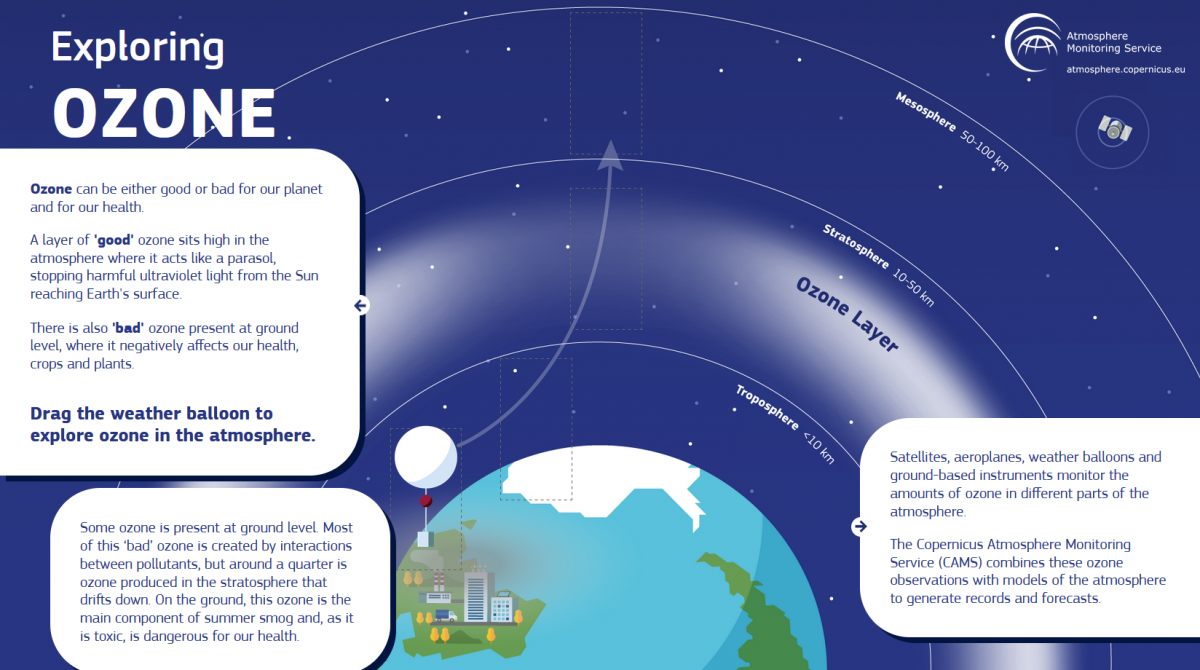Publié le 30 juillet 2021
Systematic observations are vital to understand impact of changing climate
Ozone experts from around the world have stressed the importance of systematic observations to monitor the state of the ozone layer and the presence of ozone-depleting substances, and to increase understanding of the impact of climate change on the Earth’s protective shield against harmful ultraviolet rays.
The stratospheric ozone layer is on the way to recovery thanks to actions taken under the Vienna Convention for the Protection of the Ozone Layer and the Montreal Protocol on Substances that Deplete the Ozone Layer. But there is no room for complacency, according to a meeting of Ozone Research Managers (ORM).
The five-day virtual meeting examined a number of new developments since the last meeting in 2017. These included the impact of rising surface temperatures in Polar regions on stratospheric ozone; unexpected emissions of a banned substance known as CFC-11; and international action to phase down the production and consumption of hydrofluorocarbons (HFCs), which are potent greenhouse gases and damaging to the climate.
“Measurements of ozone, ozone-depleting substances and their replacements remain the cornerstone of stratospheric ozone research. These measurements are required to monitor the success of the Montreal Protocol, to assess new factors that can slow down ozone recoveryand to support studies of ozone evolution in a changing climate, " according to the ORM recommendations.

Click to watch the movie of the annual progression of the means for a month on NASA Ozone Watch website.
Overview
The meeting reviewed ongoing national and international research and monitoring programmes to ensure proper co-ordination of these programmes and identify gaps that need to be addressed, noting the need for more resources for ground-based stations, especially those which produce long-term records of ozone, trace gases and ultra-violet (UV) radiation. This would require considerable sustained funding and strong international cooperation and capacity development. Continued efforts are required to support long-term observational data sets including their resourcing.
A number of presentations and national reports emphasized that systematic atmospheric composition observations remain critical for monitoring and understanding long-term changes in the ozone layer, as well as changes in atmospheric composition, circulation, and climate. Continuing observations will be required for many decades for the verification of the ozone recovery from ozone depleting substances and to understand interactions with the changing climate.
The ORM recommendations were presented to a meeting of the Conference of the Parties to the Vienna Convention on 28 July. The findings will also be used as input for the next WMO/UN Environment Programme (UNEP) Scientific Assessment of Ozone Depletion in 2022. The most recent assessment, in 2018, concluded that the ozone layer is on the path of recovery and to the potential return of the ozone values over Antarctica to pre-1980 levels by 2060.
The ORM adopted a number of key recommendations which will be put forward to the parties for discussion and adoption at the Thirty-third Meeting of the Parties to the Montreal Protocol due to be held online in October of this year.
Research needs
The ORM11 recommended increased research to improve
- understanding of global emissions of ozone-depleting substances (ODSs)
- hydrofluorocarbons (HFCs) and related gases
- stratospheric ozone – climate coupling
- aviation, rockets and climate intervention.
The recent research into the unexpected CFC-11 emissions underlines the value of improved estimates of ODS emissions globally. To improve estimation calculations and atmospheric monitoring, the ORM recommends expanding the top-down emission capability to cover much more of the Earth’s surface, and refining the bottom-up emission estimates globally and regionally in conjunction with improved reporting of production.
Hydrofluorocarbons (HFCs)
The emissions of ozone-friendly, but potent climate warming HFCs in the cooling sector (air conditioning and refrigeration) continue to increase. The Kigali Amendment, which came into force in 2019, limits the continued production and consumption of HFCs, contributing to climate protection. However, monitoring the continued evolution of HFCs requires global data gathering to ensure any climate gains to be made by the Amendment are maintained.
Stratospheric ozone – climate coupling
The future evolution of the stratospheric ozone layer will depend not just on the decline of ODS concentrations, but also on how climate will affect stratospheric temperatures and circulation and continue to support the need for better understanding of regional stratospheric ozone processes. While the tropics are a key area for chemistry-climate interactions, the future ozone changes in that area will depend on climate change. Similarly, recent changes in both the Antarctic and the Arctic stratosphere may reflect composition-climate interactions. Understanding the evolution in the Arctic is a key challenge. Future research should focus on understanding the role of climate change in the evolution of polar stratospheric ozone.
More information
Click on the above image and drag the weather balloon in this infographic from the The Copernicus Atmosphere Monitoring Service (CAMS). CAMS combines ozone observations with models of the atmosphere to generate records and forecasts.
The above video explains the role of the ozone layer, the formation of the ozone hole and how Copernicus Atmosphere Monitoring Service monitors atmospheric ozone to help keep our planet healthy.
